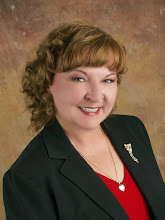I am a loyal Comcast customer. Couple reasons. I would like to get FiOS, but I don’t want my twisted copper land line stripped out of my house and so far, Verizon isn’t offering an alternative. Also I just like their commercials, they’re funny.
It pleases me to note that Comcast, like all the other cable operators, is taking the digital transition seriously and providing their customers with all the latest information, like this instruction from their website for those who have analog televisions:
Apply for coupons at http://www.dtv2009.gov/.
Wait for coupons to arrive in the mail.
Take coupons to retailer.
Choose and purchase converter(s).
May need to purchase new antenna(s).
Connect a converter to each TV.
Connect antenna each converter. (sic)
Test all channels to ensure reception (digital reception may be different than analog).
I like the “wait for coupons to arrive in the mail” advice. We wouldn’t want Pennsylvania Avenue clogged up with people standing outside the National Telecommunications and Information Administration waiting for the coupon distribution.
Comcast provides a second option and that is to buy a digital television. Here’s their advice:
Choose and purchase new TV(s).
May need to purchase new antenna(s).
Install new TV in each location.
Connect antenna each new TV. (sic again)
Test all channels to ensure reception (digital reception may be different than analog).
Notice how they tell you to test all the channels because digital reception may be different than analog? And for each option, getting the converter or buying a new TV, Comcast reminds the reader “if you choose this option, make sure you plan for EVERY TV in your home.” Thank goodness for this tidbit, I don’t want to miss House just because my husband is watching football.
But wait! There’s a third option. “Subscribe to Pay TV Service.” And if you do, here’s what you need to know:
Comcast customers: You’re ready already. You don’t need to do a thing.
With one phone call to 1-800-COMCAST, we’ll take care of every TV in your home. Call Comcast and we’ll handle every TV for you.
Installation service available, no hassles.
No antennas or set-top equipment required.
Voila! No hassles, no antennas or set-top equipment required. And if you hurry, you can get Limited Basic Cable for $10 per month for 12 whole months! Yeah! Comcast saves the day. Yippee! For just $10 bucks a month every antiquated analog owner will get the Basic channels, that’s 15 channels, to include local broadcast, PBS, CSpan, the access channels and plenty of shopping.
But wait! According to a recent report out of Seattle, those people who have or buy Expanded Basic and have an analog TV will need a converter box to get channels 30 through 80. And this is where it gets confusing. Comcast will let people use 3 boxes for free, two little ones and then a larger digital box with a programming guide. Additional little boxes will cost $1.99 a month but there was nothing about the cost of additional larger boxes. And there was nothing in the report about what the “rush” for boxes and technicians will look like in the next 60 days.
Comcast should probably change its website to let people know that if they are on Expanded Basic and they have an old set, they need to set up an appointment for the boxes.
And maybe Comcast needs to let some access stations know that they won’t be on good old fashioned Basic anymore. I sent out an email to find out how many access stations are in the 30-80 channel range (so many on the Comcast systems are up at the 90’s these days). Out of 17 responses, 6 access centers reported a channel number between 30-80, which means those Expanded Basic customers won’t receive the access channels without the box and Limited Basic customers won’t receive them at all. So there must be some plan for re-shuffling the access channels in that 30-80 range, but so far the access centers aren’t privy to it. Hey Comcast, there’s only 60+ days left until the transition, you might want to send out a memo.
I have been trying for sometime to nail down the definition of Basic service and luckily Comcast has just provided that definition. It is channels 2-29 and channels above 80 (to about 99). But what’s more intriguing is that if Comcast is doing this we know the other cable operators are going to do it but so far not a peep from the other guys. Are we to assume that none of the other cable operators have PEG channels in the 30-80 range? And at what point will all the channels be digitized and even the most Basic customers will need a box? And are there really that many boxes available?
Yes, the digital transition has been coming for so long we’re all a little sick of hearing about it. Cable has done a good job of positioning itself as the answer but now we know that’s only sorta true. I look forward to February 18, 2009. It should be a dilly of a day.
In case you haven't seen this...my favorite:
http://www.youtube.com/watch?v=AH37RiYfHT8




